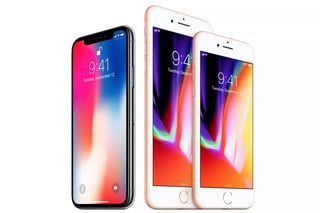As readers of this blog know, one of my primary objectives is to use this as a forum for continuing our  learning, dialogues, and application of Business Acumen concepts back to your world to ultimately make the best business decisions to drive revenues, profits, and shareholder value.
learning, dialogues, and application of Business Acumen concepts back to your world to ultimately make the best business decisions to drive revenues, profits, and shareholder value.
In our learning journeys we always start with business strategy because the best leaders in the world know, “If you don’t know where you are going, any road will get you there.”
Which brings us to Apple’s major announcement launching the 10th anniversary of the iPhone.
Apple’s overall business strategy is Product Leadership and they have created the perception that they are the most innovative company on the face of the planet. While we all know that isn’t necessarily true, in business perception is usually reality and Apple has done a better job of any company in the history of commerce in creating and maintaining their brand equity.
However, in terms of pure technical innovation, the analysts and skeptics are saying that the new iPhone X (pronounced iPhone TEN) is presenting to customers no new game-changing technologies. The larger, brighter and more resilient screen, the face recognition, and most of the other “new” features have already been launched by Samsung. However, Apple’s executives are telling the world that all of these features have been further developed to higher levels of innovation that have not been seen before and will create a disruption. For example, even though Samsung uses facial recognition software, hackers have been able to open the phones with high definition pictures “tricking” the phone to open. Apple claims that it’s software uses “artificial intelligence” and 30,000 infrared dots to make sure it can’t be hacked.
We shall see…
Strategically, technically, and from a price perspective, Samsung and the Chinese smartphone manufacturers have caught up to Apple and the iPhone X is trying to break away. The current versions of Chinese smartphones provide about 90% of the same functionality of the iPhone at about 30% of the price.
From Apple’s perspective, all of this boils down to one simple question; does the value proposition of Innovation, Application, Brand, and Price to customers match the value dashboard of what customers are looking for? In other worlds does this new combination of bells and whistles shift the market back to Apple?
In my opinion and the opinion of many others a lot smarter than me, the answer to that question is going to be no.
So, then what’s the plan? What is Apple really doing? What can we learn from this?
I think Apple’s pricing strategy gives us the most insights and I feel there is a fascinating lesson to be gained. The new Apple X is going to retail for about $1,200 which puts it in the same price range as a very good personal computer. From the early indications, Apple is betting on a super-premium pricing strategy that seems very similar to the pricing strategies luxury handbag manufacturers use when creating and supporting their brand. If your everyday functional low-end Chinese smartphone is a standard Michael Kors handbag bag, then is the new iPhone X the Gucci, Louis Vuitton, or Chanel? The patterns seem to indicate so.
According to the excellent research from Deloitte called Global Powers of Luxury Goods 2017, global luxury brands are very strong and will continue to get stronger. The year over year growth rate is 6.8% and the compounded growth rate between 2013-2015 was 5.2%. These numbers compare to the global growth rate of all goods at about 1%.
Essentially, Apple is making the ultimate brand play here by creating the perception of good-enough innovation with extremely high pricing. Companies like Amazon are going in the completely opposite direction by driving operational excellence and lowering of costs.
Only few companies like a Louis Vuitton have been able to create sustainability for a long time through this strategy so it will be interesting to see how Apple executes as they are going to have to rely a lot more on their marketing and a lot less on their innovation.




